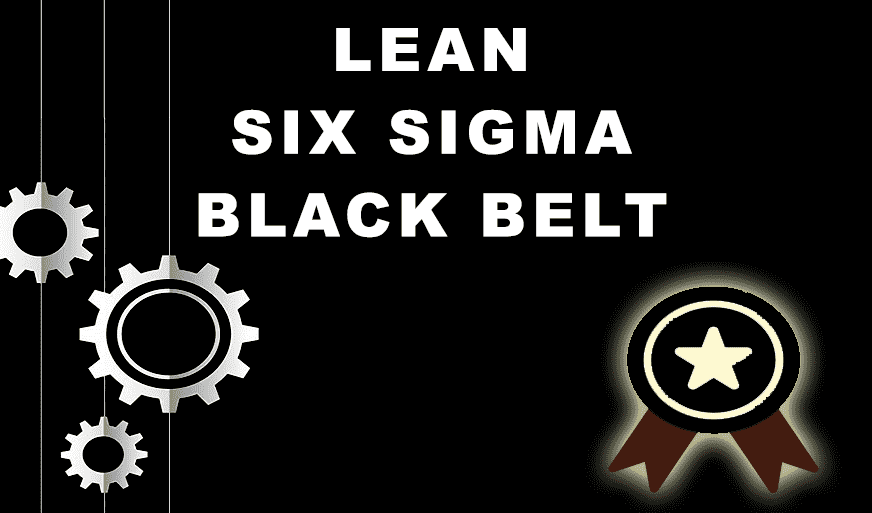Understanding the Key Principles of Lean Manufacturing
-
 By Niharika Chaurasia
By Niharika Chaurasia - Published on Nov 22 2023

Table of Contents
Origin of Lean Manufacturing Principles
Lean Manufacturing has its roots in the Toyota Production System (TPS), developed by Toyota in post-World War II Japan. Toyota faced significant challenges, including resource constraints and the need for efficient production. This adversity led to the innovation of Lean principles.
Key figures, such as Taiichi Ohno and Shigeo Shingo, played pivotal roles in shaping the TPS. Ohno pioneered concepts like "Just-in-Time" production, while Shingo introduced error-proofing techniques.
Lean principles have transcended the boundaries of Toyota and the manufacturing sector, finding applications in various industries globally. Today, over 70% of manufacturers worldwide consider Lean Manufacturing a strategic priority.
The influence of Lean has extended beyond manufacturing to service industries, healthcare, and software development, leading to greater efficiency and customer-centric operations.
In the upcoming sections, we'll delve into the core principles of Lean Manufacturing and explore how they drive efficiency, reduce waste, and enhance product quality.
Principles of Lean Manufacturing
In this section, we'll look at the five important ideas of Lean Manufacturing. These ideas help businesses work better and waste less. We'll show you how these ideas work in real life and share interesting facts and practical tips to use them in your work. By the end, you'll understand how these ideas can make a big difference in your business.

Customer Value
The foundation of Lean Manufacturing is rooted in delivering value to the customer. This principle requires companies to identify and understand what customers truly value and ensure that their products or services align with those needs. This customer-centric approach not only improves customer satisfaction but also eliminates waste by focusing on what matters.
Toyota started making cars when people wanted them, which helped save money on storing extra cars, made the cars better, and made customers happier.
A survey from Deloitte found that 77% of manufacturers think that focusing on what customers want is crucial for a successful business. Companies that prioritize customer value experience an average customer satisfaction increase of 12%, leading to higher retention rates.
Practical Application: Conduct market research to understand customer preferences and implement feedback loops to continuously improve products or services based on customer input.
Value Stream Mapping
Value Stream Mapping is a visual representation of the end-to-end process that delivers a product or service. It aims to identify and eliminate waste by providing a clear overview of the entire process, including the flow of materials, information, and actions. This principle allows companies to identify bottlenecks and areas for improvement.
Amazon uses value stream mapping to optimize its order fulfillment process, reducing lead times and improving inventory management.
Companies that implement value stream mapping experience a 30-60% reduction in lead times on average. A study by Aberdeen Group found that 60% of best-in-class organizations use value stream mapping to drive process improvements.
Practical Application: Create value stream maps for key processes within your organization and involve cross-functional teams to analyze and optimize the value stream.
Flow
The "Flow" principle in Lean Manufacturing stresses the importance of having work move continuously through the production process without interruptions. This means reducing delays and making sure work flows smoothly from one stage to another.
Honda adopted flow manufacturing in its assembly lines, which led to much shorter production cycles and a more efficient use of resources.
Lean organizations that implement flow principles report up to 50% reduction in lead times. Flow principles can lead to a 25-50% reduction in operational costs.
Practical Application: Design work processes to minimize handoffs and waiting times. Implement tools like Kanban to manage work in progress.
Pull System
The Pull System, as opposed to traditional push systems, produces items based on actual customer demand. It minimizes overproduction, reduces excess inventory, and ensures that resources are allocated where they are needed.
Dell's direct-to-customer model is an excellent example of a pull system. They only build computers when orders are placed, minimizing inventory costs and responding directly to customer demand.
The pull system can reduce inventory costs by 50% or more. Companies that implement pull systems report up to a 25% reduction in production cycle times.
Practical Application: Implement a Kanban system to control production based on customer demand and continuously monitor customer demand to adjust production accordingly.
Perfection
"Perfection" in Lean Manufacturing is not an unattainable goal but a commitment to continuous improvement. It involves creating a culture where all employees are engaged in identifying and addressing issues to make incremental improvements over time.
Toyota, often considered a pioneer of Lean Manufacturing, has built a culture of continuous improvement. They involve all employees in identifying and resolving problems in real-time, resulting in higher quality and efficiency.
Companies that embrace a culture of perfection report a 15-30% improvement in overall operational performance. Continuous improvement practices can lead to a 10-20% reduction in costs.
Practical Application: Encourage employees to submit improvement suggestions regularly and implement Kaizen events to focus on specific improvement projects.
These five principles form the core of Lean Manufacturing and are vital for achieving operational excellence. By understanding, applying, and continuously improving these principles, organizations can reduce waste, enhance product quality, and meet customer demands effectively.
Implementation of Lean Principles in Teams
Implementing Lean Principles in teams is a critical step in ensuring the success of Lean Manufacturing within an organization. It's not just about the principles themselves; it's about how these principles are embraced, executed, and sustained through effective teamwork.

Team Collaboration
Lean Manufacturing encourages teamwork and collaboration as a means to achieve operational excellence. Teams work together to identify and eliminate waste, streamline processes, and continuously improve. Collaboration has several key aspects:
- Cross-Functional Teams: Lean teams often consist of members from different departments, ensuring a holistic approach to problem-solving.
- Clear Roles and Responsibilities: Team members should have defined roles and responsibilities to prevent duplication of efforts and confusion.
- Effective Communication: Open and transparent communication is vital for sharing ideas and progress updates. Regular team meetings and huddles are common in Lean environments.
- Shared Goals: Teams should be aligned with the organization's objectives and the Lean principles, working towards delivering value to the customer.
Employee Training
To ensure that teams can effectively implement Lean Principles, it's crucial to provide proper training to all team members. This training should cover the following areas:
- Lean Concepts: Team members should understand the core Lean principles and methodologies, such as value stream mapping, 5S, and Kaizen.
- Problem-Solving Skills: Lean teams should be equipped with problem-solving tools like root cause analysis, fishbone diagrams, and PDCA (Plan-Do-Check-Act) cycles.
- Change Management: Lean often involves significant changes in processes and procedures. Team members should be trained in change management to ease transitions.
- Continuous Improvement Mindset: Employees should embrace the idea of continuous improvement and be encouraged to suggest and implement changes.
Continuous Improvement
One of the hallmarks of Lean Manufacturing is the culture of continuous improvement. It's not a one-time effort but an ongoing process. Here's how teams can embrace this principle:
- Regular Review: Teams should periodically review their processes and results to identify areas that need improvement.
- Kaizen Events: Implement Kaizen events, which are short, focused projects aimed at making quick improvements in specific areas.
- Feedback Loops: Establish feedback loops with team members and other departments to gather insights for improvement.
- Celebrate Success: Recognize and celebrate the successes and improvements achieved by teams, reinforcing the culture of continuous improvement.
Mastering Lean Six Sigma Principles with Sprintzeal
Lean Six Sigma is a powerful methodology for process excellence. Sprintzeal offers essential training and certification to master these principles.
Why Lean Six Sigma Training Matters
In today's competitive business world, organizations must excel in process improvement and quality management. Lean Six Sigma provides a proven framework to achieve these goals. To become proficient in Lean Six Sigma, quality training is crucial.
Why Sprintzeal?
- Comprehensive Training: Sprintzeal provides Lean Six Sigma training for all levels, from Green Belt to Black Belt.
- Certified Instructors: Learn from certified instructors with real-world experience.
- Flexible Learning: Choose from online or in-person training to suit your schedule.
- Customized Programs: Tailor training to your organization's needs for maximum impact.
- High Success Rates: Sprintzeal's training methods lead to high pass rates on certification exams.
- Post-Training Support: Get guidance on applying Lean Six Sigma knowledge in your workplace.
Sprintzeal provides a comprehensive range of Lean Six Sigma training programs, including:
Lean Six Sigma Green Belt Certification: This program is designed for professionals who want to lead process improvement projects and become experts in Lean Six Sigma methodologies.
Lean Six Sigma Black Belt Certification: For those seeking advanced expertise in Lean Six Sigma, the Black Belt program covers in-depth problem-solving techniques and project leadership skills.
Lean Six Sigma Yellow Belt Certification: Ideal for employees who participate in Lean Six Sigma projects and want a basic understanding of the methodology.
FAQ
What are Lean Production Principles?
Lean production principles aim to maximize efficiency, minimize waste, and deliver value to customers.
What are the 7 Wastes in Lean Manufacturing?
The 7 wastes in Lean Manufacturing are Transportation, Inventory, Motion, Waiting, Overproduction, Overprocessing, Defects, and Skills (TIMWOODS).
What is the 5S Model?
The 5S model is a workplace organization method involving Sort, Set in order, Shine, Standardize, and Sustain for efficiency and safety.
What is the Six Sigma Methodology?
The Six Sigma methodology uses data and statistical analysis to reduce process variation and minimize defects.
How many Lean Principles are there?
There are typically five core Lean principles, with some variations and sub-principles.
Final Thought
As we wrap up our exploration of Lean Manufacturing principles, it's evident that the road to operational excellence begins with Lean. Lean principles have reshaped industries, leading to efficiency, waste reduction, and improved customer satisfaction.
If you're ready to master Lean and Six Sigma principles, Sprintzeal offers a range of courses and certifications to equip you for success. Whether you're experienced or just starting your journey, these courses can open doors to exciting opportunities and help you drive change in your organization.
Don't hesitate; start your Lean journey with Sprintzeal today. Join the ranks of successful Lean practitioners and be the catalyst for transformation.
Subscribe to our Newsletters
Popular Programs
Trending Posts
Six Sigma tools for DMAIC Phases
Last updated on Nov 8 2024
Overcoming Common Challenges in ISO 9001 Certification: Tips and Best Practices
Last updated on Sep 9 2024
Six Sigma Certification Guide - A Professional's Guide
Last updated on Sep 27 2024
Lean Six Sigma on Resume for Rewarding Career Benefits
Last updated on Nov 20 2023
A Supply Chain Management Guide to Mastering Logistics End to End
Last updated on Nov 13 2023
The Lean Continuous Improvement Model: A Comprehensive Guide
Last updated on Nov 7 2023
Categories
- Agile Management 54
- AI and Machine Learning 42
- Big Data 53
- Business Management 51
- Cloud Computing 44
- Digital Marketing 56
- Information Security 8
- IT Hardware and Networking 17
- IT Security 103
- IT Service Management 29
- Leadership and Management 1
- Microsoft Program 2
- Other 43
- Programming Language 31
- Project Management 162
- Quality Management 75
- Risk Management 8
- Workplace Skill Building 2
Trending Now
Top Career benefits of Lean Six Sigma Green Belt
ArticleLean methodology, Six Sigma methodology and Lean Six Sigma Explained
ArticleSix Sigma Black Belt Certification – Value and Career Benefits in 2024
ArticlePareto Chart in Six Sigma - Explained
ArticleQuality Management Interview Questions 2024
ArticleSix Sigma Certification Guide - A Professional's Guide
ArticleSix Sigma Yellow Belt Certification - Six Sigma for Beginners
ArticleQuality Control Explained – Six Sigma
ArticleTotal Quality Management - A Complete Guide for Beginners
ArticleQuality Assurance in Six Sigma Explained
ArticleQuality Assurance vs Quality Control
ArticleSix Sigma Certification – Everything you Need to Know About Getting Certified
ArticleLean Six Sigma on Resume for Rewarding Career Benefits
ArticleQuality Manager Interview Questions and Answers for 2025
ebookService Delivery Manager Interview Questions and Answers (With Examples)
ArticleSix Sigma Interview Questions and Answers 2024
ArticleHow to become a Quality Analyst
ArticleA Supply Chain Management Guide to Mastering Logistics End to End
ArticleSenior Quality Manager Interview Questions and Answers 2024
ArticleTop 30 Quality Analyst Interview Questions and Answers 2025
ArticleFinancial Analyst Interview Questions and Answers 2024
ArticleRisk Manager Interview Questions and Answers 2024
ArticleCompliance Manager Interview Questions and Answers 2024
ArticleOperation Manager Interview Questions and Answers
Article5 Lean Continuous Improvement Principles to Supercharge Your Operations
ArticleHow to Become a Quality Manager - Career, Job Scope and Certifications
ArticleEssential Components of a Quality Management System
ArticleSix Sigma Certifications - Reasons Why you Should Get Them
ArticleTop Qualities of a Good Manager and a Leader
ArticleLearn about Statistical Process Control (SPC) and its top applications
ArticleCost of Poor Quality - A Detailed Guide
ArticleImplementing 5S Methodology for Better Work Efficiency
ArticleWhat Is Lean Management?
ArticleBest Six Sigma Books in 2024
ArticleLeadership vs Management - The Ultimate Guide
ArticleQuality Assurance Plan - Six Steps To Quality Assurance Plan
ArticleOperational Planning Creation, Key Elements and its Benefits
ArticleA Complete Guide to Product Life Cycle Stages 2025
ArticleSix Sigma tools for DMAIC Phases
ArticleWhat Is Lean Manufacturing?- An Overview
ArticleThe Lean Continuous Improvement Model: A Comprehensive Guide
ArticleDMAIC vs. DMADV: Key Differences and Choosing the Right Six Sigma Methodology
ArticleA Deep Dive into the Power of Lean Continuous Improvement Process
ArticleLean Continuous Improvement Methods for Business Excellence
ArticleIntroduction to Lean Manufacturing- Definitions, Framework, and More
ArticleSecret to Unlock Organizational Excellence: Stages of Continuous Improvement
ArticleLean Continuous Improvement: A Detailed Guide to Mastering Organizational Quality
ArticleLean Waste Management: The Ultimate Guide 2023
ArticleA Deep Dive into Lean Continuous Improvement Tools
Article8 Wastes of Lean - Strategies for Identification and Elimination
ArticleThe Ultimate Guide to Lean Manufacturing
ArticleUnderstanding Lean Manufacturing's Pros and Cons
ArticleLean Waste Reduction Strategies: Boost Efficiency and Cut Costs
ArticleTop 10 Lean Manufacturing Tools for Optimal Productivity
ArticleBeyond the Basics: Benefits of Lean Continuous Improvement
ArticleWhat are Quality Standards? | A Guide to ISO Standards
Article7 Important Types of Quality Management System
ArticleA Comprehensive Guide to Quality Management Systems
ArticleISO 9001 Standard: Benefits and Certification
ArticleBenefits of QMS Certification for Your Business
ArticleStep-by-Step Implementation Guide to ISO 9001
ArticleThe Ultimate Guide to ISO 9001: Boosting Quality and Certification Success
ArticleQuality Management System – QSM Approaches and Methodologies
ArticleHow to Effectively Implement a Robust Quality Management System?
ArticleExplaining QMS Documentation Structure: Benefits and Best Practices
ArticleWho Needs ISO 9001 Certification and Why?
ArticleKey Elements of ISO 9001:2015 Quality Management System
ArticleOvercoming Common Challenges in ISO 9001 Certification: Tips and Best Practices
ArticleBest Quality Management Tools
ArticleTotal Quality Management (TQM) vs. Six Sigma
ArticleQuality Manager Salary: What Freshers & Experts Earn in 2025
ArticleCertified Scrum Product Owner: Job Roles And Responsibilities
ArticleTips for Continuous Integration Testing: Streamlining QA
Article10 Quality Management Strategies Adopted by Top Managers
Article

















